My parents gifted me my old dresser I had when I was a child! I wish I had taken a “before” picture of it before I painted it brown. I changed out the handles as well. The dresser was a 1970s gem! This dresser was one of the first dressers I painted when I started painting furniture over 10 years ago now!
I found some cheap brown paint and painted the dresser from an old stale light brown to the dark brown and while that was an improvement, I still wasn’t happy with the results! I didn’t use chalk paint as I hadn’t even discovered chalk paint at that point. In this post we will go through painting a dresser with chalk paint.
One of the advantages to this old dresser is that it is solid wood which is a rarity nowadays. Most modern furniture is not made of solid wood so I didn’t want to get rid of the dresser and it still had so much life left in it.
This post may contain affiliate links, please see Disclosure Policy
After I finished this project, it occurred to me that this project would make an amazing wood dresser for a nursery ! I had two boys myself and loved the way the baby blue looks with the style of the dresser!
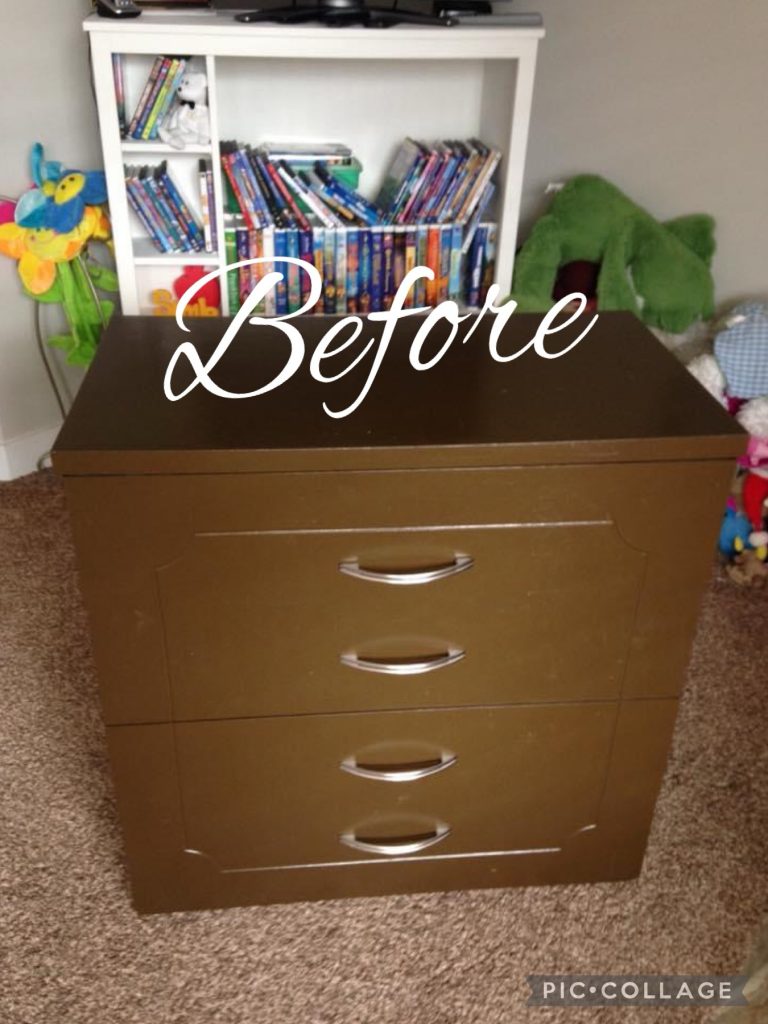
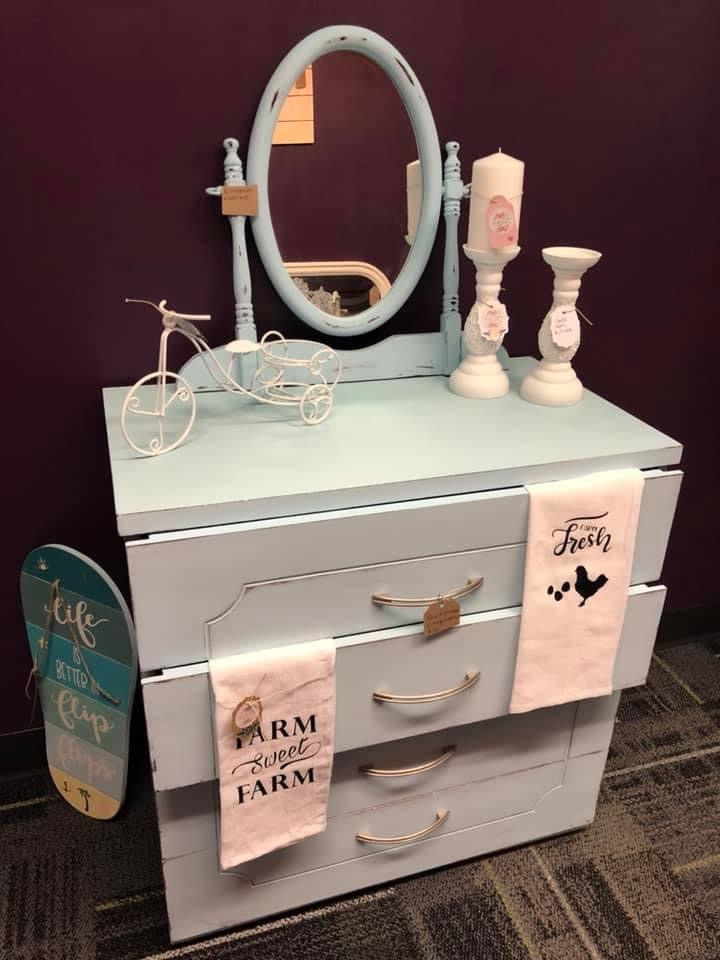
How to Paint Distressed Furniture with Chalk Paint
This dresser was fairly easy to paint and if I were to recommend a great starter piece of furniture for a beginner, it would be a dresser like this!
It is a good idea to remove the drawers first and also the drawer pulls and then start painting with your chalk paint. I cannot find the particular baby blue I used on this piece anymore as it was 10 years ago, but I was able to find a very similar baby blue chalk paint if you are interested!
Secondly, start painting the drawers one by one and letting each drawer dry and then adding them back to the dresser. Put the drawer pulls back on and viola!
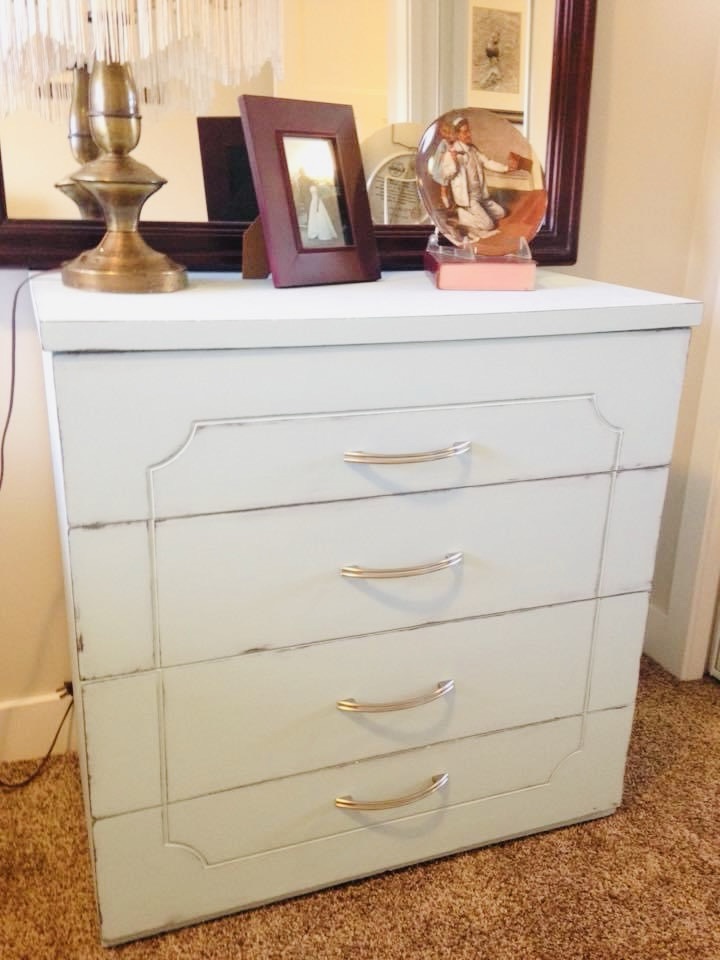
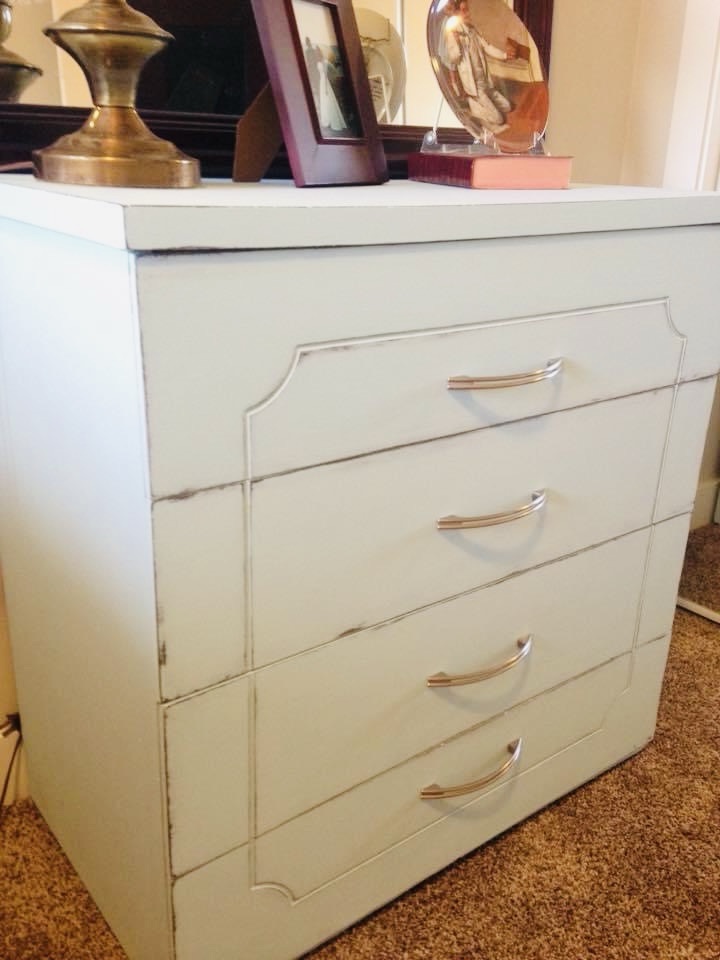
Distressing the Furniture
The nice thing about this dresser starting off with the dark brown is when I went to distress the piece, it was so easy! It didn’t take much to have the dark brown parts showing through. You can distress in a couple of different ways. I always prefer to distress with a wet rag but you cannot do this technique very well if you have let the furniture dry for quite some time. This requires for you to do it shortly after you have painted.
Of course the second way is by using a low grit sandpaper on the edges and corners and anywhere you would find a natural distress.
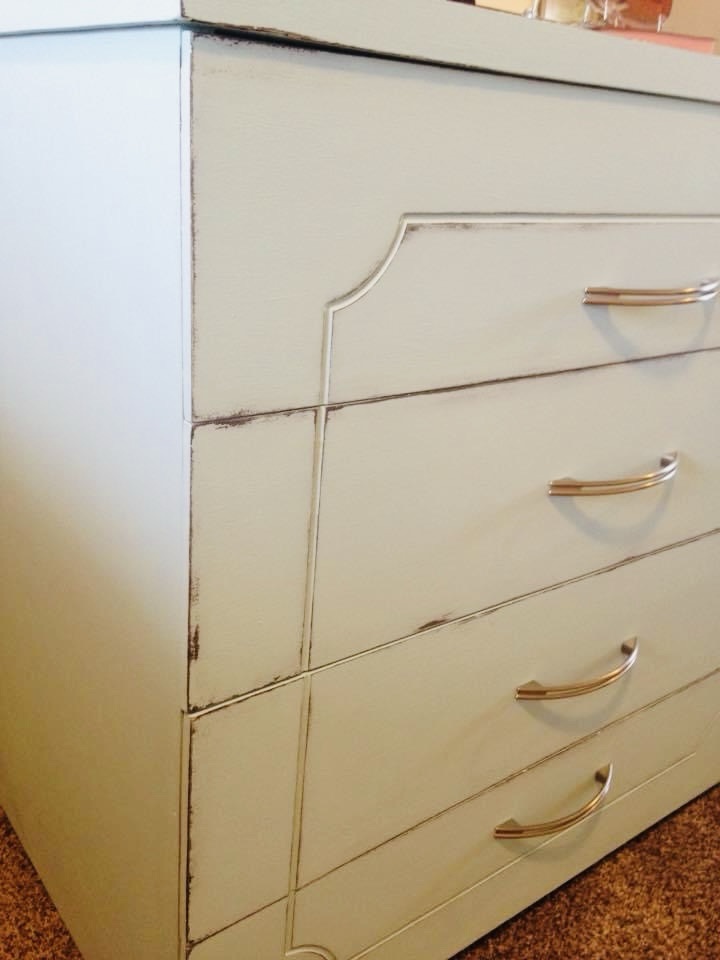
What do you think of the transformation? I love the way the blue turned out ! This also goes to show you that if you make a mistake painting furniture, its only paint and you can re-paint it!
Before you go, don’t forget to check out some of my other furniture refinishing posts!
- Can You Paint a Crib!
- Coffee Bar Makeover
- How to Use Chalk Paint on Furniture
- Chalk Painting Furniture Ideas for Beginners
- Hand Painted Grandfather Clock Makeover



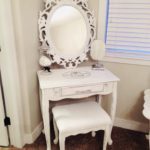


I LOVE it, Chantel. Very pretty!
Thank you Wendy for your kind comments!